I recently attended a half-day conference in Houston with school administrators, construction company executives and design professionals hosted by the Association for Learning Environments, also known as A4LE. It featured a panel moderated by a general contractor that included executives of two specialty contractors and a staffing agency. These executives were asked to identify the biggest challenges faced by the construction industry today. Not surprisingly, “workforce” was clearly identified as the issue at the top of the list. Each panelist bemoaned the difficulty in finding and retaining skilled labor as well as its impact on construction costs and schedules. Tangentially, C3 was mentioned as an organization that is working to address this challenge, Illustrating that there is growing awareness that this problem can be solved.
Workforce, or lack of a sustainable one, is why C3 was established. Over the past 35 years, the construction industry has largely moved away from a craft workforce of skilled, professional employees to one of unskilled, independent subcontractors. While this description is not true for all contractors and specialty contractors, it is the perception of the construction industry that exists today among most Americans. The construction industry is losing the talent battle to other industries, and that will continue until construction employers change their workforce practices, which, in turn, will change the negative perception of the industry.
C3’s formula is the solution to changing the current negative perception of a career in the craft trades of construction to a positive one that attracts the interest of young people in middle school and high school, their parents, school counselors and advisors. A key component of any program like C3 is for construction companies to offer craft training linked to a career path, a critical element for any employer’s strategy to attract and retain high quality candidates. It is also the area where C3 provides expertise and counsel for C3 Accredited Employers. It takes a commitment by you as the employer, and C3 can guide you through the development of your craft-training program.
In fact, C3 is establishing several peer groups made up of construction companies from like trades to share their experiences and best practices as they develop their respective craft-training initiatives. We have a pilot group of employers from the Flooring & Tile trades that has been working together since January, and other peer groups are currently being formed that will begin to meet in July and August. Included among these are groups from:
- Flooring & Tile (eight companies currently enrolled)
- Demolition, Site Prep, Earthwork and Utilities (4 companies currently enrolled)
- Roofing & Waterproofing (2 companies currently enrolled)
- Concrete & Masonry (3 companies currently enrolled)
- Carpentry & Drywall (5 companies currently enrolled)
- Piping & HVAC (2 companies currently enrolled)
- Interior & Finish Trades (4 companies currently enrolled)
- Other trades (6 companies currently enrolled)
As was stated by those on the panel at the conference described earlier, “workforce” is the construction industry’s biggest challenge. That challenge exists because many construction employers take shortcuts with their craft workforce, thereby creating a negative perception of the entire industry. C3 is the business coalition that is helping companies change that perception and create a highly skilled, professional craft workforce.
Someone once said that a rising tide lifts all boats. Be a part of the solution, not part of the problem, and change the way that the industry recruits, trains and retains its skilled craft workforce of the future.
For more information on joining a peer group or creating a craft-training program, please contact Angela Robbins at 713.999.1032 or [email protected].
C3 is how.
Chuck Gremillion
Executive Director

